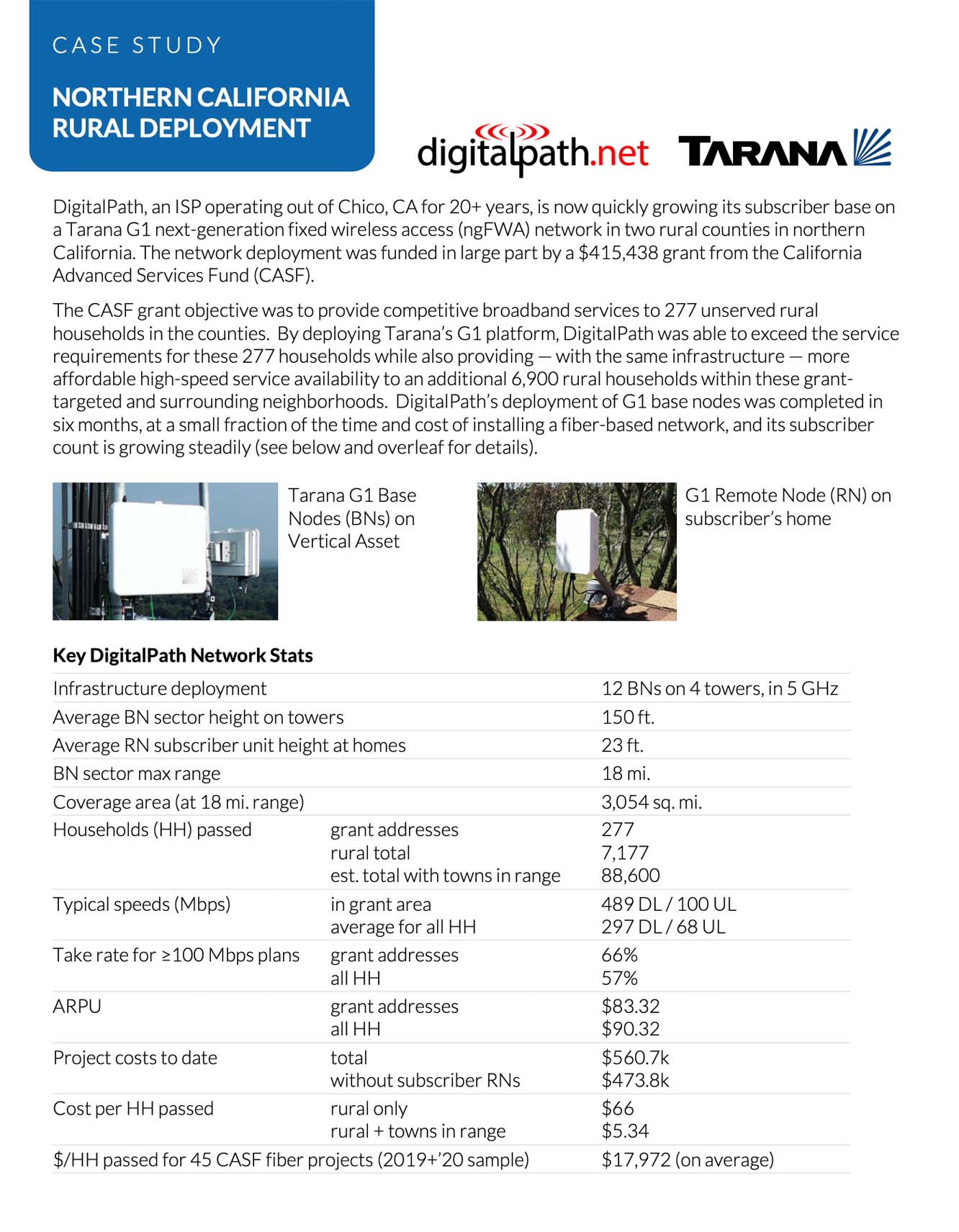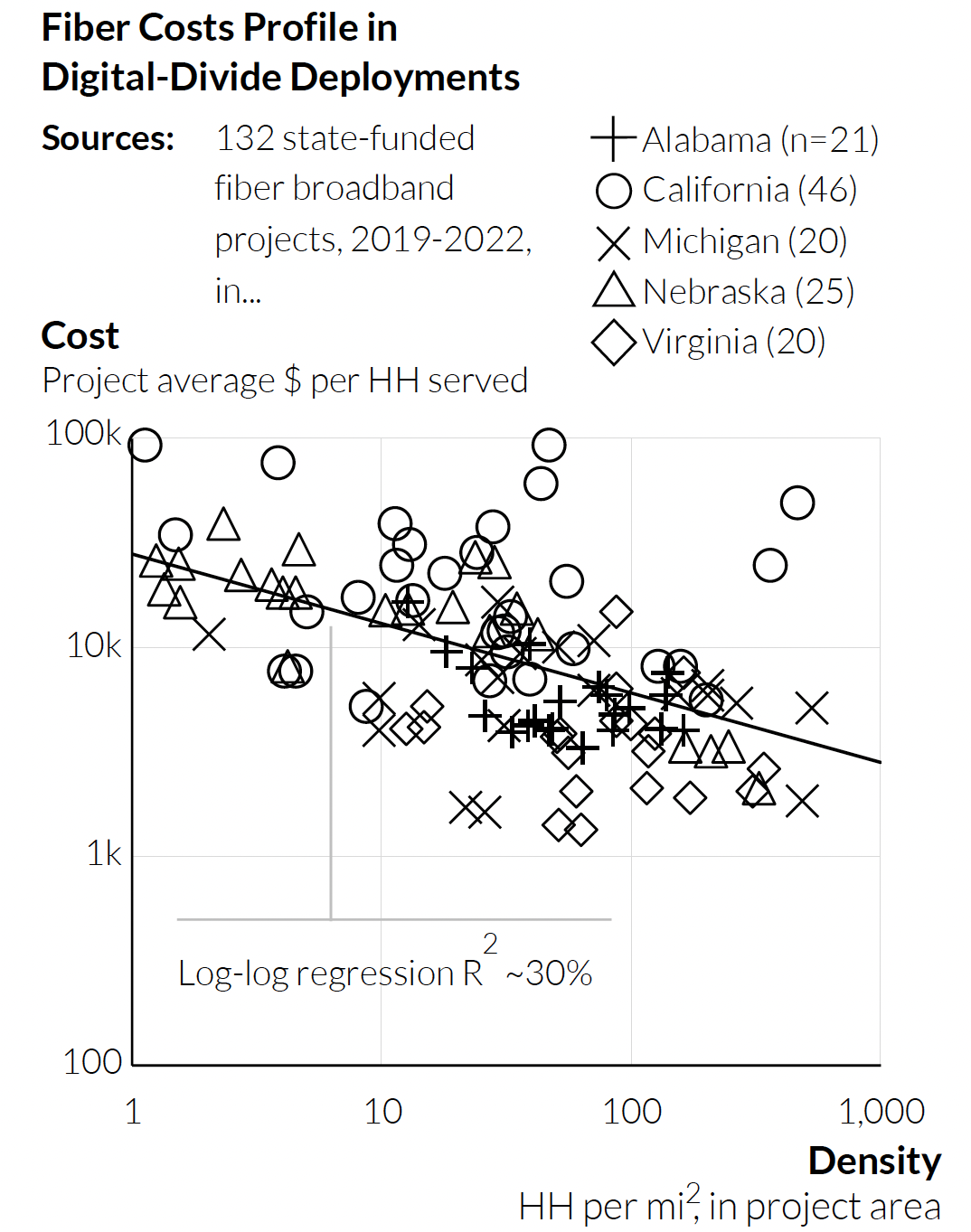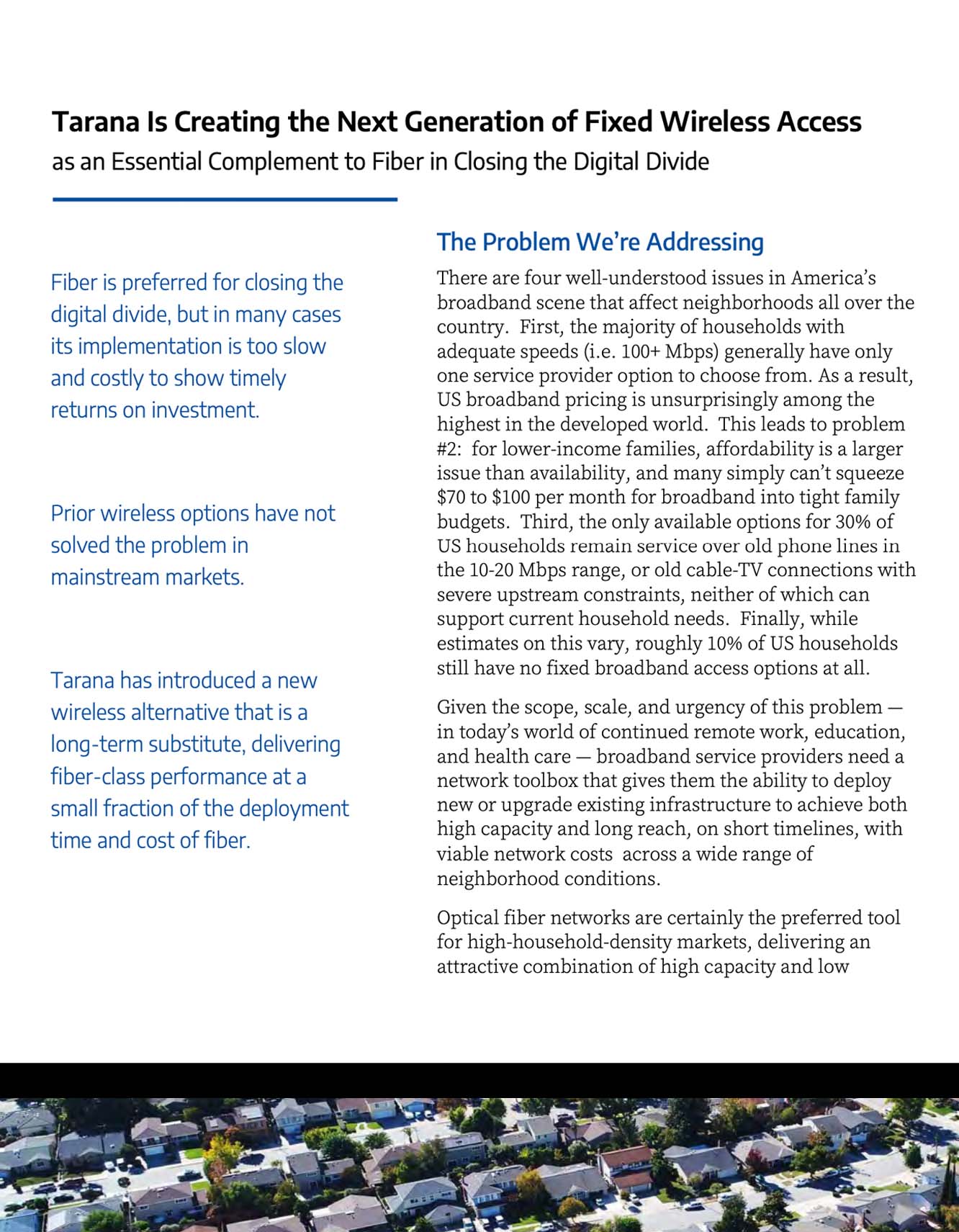Cost to close the digital divide in the US is 5x the available funding–Tarana has a solution
New Study of Real-World Fiber Broadband Costs
Powered by detailed data from 132 digital divide fiber projects in 5 US states, 2019–2022, totaling $733.5M
Fiber broadband is great.
But sometimes it's more costly and time-consuming to deploy fiber than is practical.
Identifying when it doesn’t work can be a complex matter.
To make that easier, we’ve tapped a trove of real-world fiber deployment metrics from 132 divide projects in Alabama, California, Michigan, Nebraska, and Virginia — chosen to represent the full range of the challenges US geography presents — to build a well-grounded model for the costs of fiber deployment. The projects served 52.7k homes across 3,240 mi² at an eye-watering average cost of $13.9k per home.
While broadband service over fiber is ideal, it’s important to acknowledge there are situations where it is neither practical nor reasonable, due to high deployment costs and unacceptably long timelines to service. This is most clear in government-funded divide projects, where circumstances inherently make normal commercial business-case metrics unsound. Understanding clearly the costs of fiber and other technologies is critical for policymakers, to ensure that policy objectives can be met with available funds. Unfortunately, gaining that understanding is challenging, given wide variations in fiber deployment methods, local circumstances, and hence real-world costs.
To get a better understanding of the problem, we’ve tapped public-domain data from 132 digital divide projects funded by state level broadband offices since 2019 in 5 representative states (Alabama, California, Michigan, Nebraska, and Virginia).
Considerations and findings from this study:
- The deployments examined were designed to serve a total of 52.7k homes at an aggregate cost of $733.5M (on average a taxpayer-shocking $13.9k per household served).
- We used this data to model the likely cost of fulfilling the intent of the broadband element of the US Congress’ 2021 Bipartisan Infrastructure Law, with its stated goal of reaching 100% of America’s households with fast, affordable internet service.
- Extrapolation from the project samples indicates that a fiber-only approach would cost over $200B to serve the 16M families currently identified as un- or underserved by the FCC.
- Obviously, this far exceeds the $42.45B available in the Broadband Equity, Access, and Deployment program (BEAD) that is the broadband component of the Bipartisan Infrastructure Law.
Tarana recommends our unique next-generation fixed wireless platform (ngFWA), which has now been well-proven to deliver fiber-class broadband performance at a fraction of the cost and deployment time, wherever fiber economics are challenging. Altogether, fiber, ngFWA, and LEO satellite constellations for very remote locations comprise a comprehensive and practical toolkit for closing the increasingly important yet persistent digital divide at reasonable costs.
To dive deeper into the data and our analysis approach, complete the form to download the full report and get a model of data for you to plug in your own data points.
Want to use our model to see how your broadband projects can benefit from a hybrid approach of fiber, ngFWA, and LEO satellite? Download the model with our data and assumptions so you can see how your project could be planned.
Learn More

Digital Path CA Grant Success
Read how DigitalPath used G1 for CA grant obligations coverage at a fraction of the time and cost of fiber

